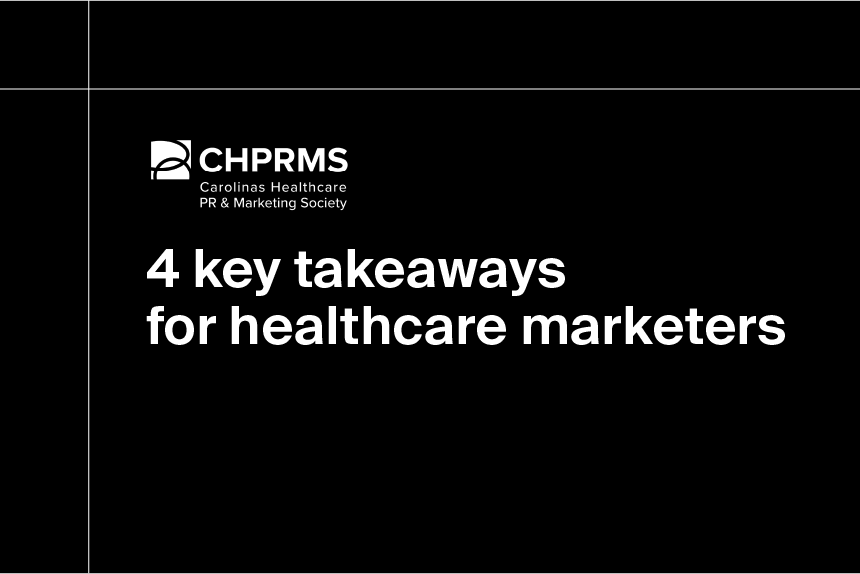From PBMs to pricing: How state laws are reshaping the landscape for healthcare players
Jul 31st, 2025

State lawmakers across the country are pushing a wave of healthcare reforms that’s shaking up the industry’s power structure, taking aim at powerful players, from hospital giants and pharmacy benefit managers (PBMs) to insurers and private equity firms.
So far in 2025, state legislatures have advanced a range of measures targeting everything from curbing hospital monopolies to regulating PBM practices to address rising healthcare costs. These reforms are expected to reshape the roles and revenues of providers, investors, and other stakeholders, prompting changes in reimbursement, ownership structures, and market dynamics that will reverberate through local healthcare systems.
While state-level action on healthcare reform is nothing new, this current surge reflects a familiar pattern: when Washington slows down, statehouses speed up. Rather than waiting for the federal government to act on critical issues, states are using regulatory authority to impose controls targeting specific pressure points in local healthcare systems.
Here’s how that effort is taking shape around the country.
States lead the charge on PBM reform
Pharmacy benefit managers (PBMs) have become a lightning rod for criticism, accused of opaque pricing and conflicts of interest, especially when they own pharmacies. In the absence of federal reform, states are stepping up to exert more PBM oversight.
So far in 2025, more than half a dozen states have introduced or enacted legislation aimed at increasing transparency, limiting steering, and reining in PBM control over drug pricing. The table below highlights a selection of these state-level measures.
State-level PBM reform efforts in 2025
State | Legislation | Key provisions | Status |
Alabama | SB 252 | - Requires PBMs to reimburse community pharmacies at Medicaid rates - Prohibits spread pricing and patient steering - Requires rebate pass-through and allows drug cost disclosure - Bans fees tied to network participation and claims processing | Signed into law and enacted; takes effect October 1, 2025 |
Arkansas | HB 1150 (Enacted as Act 624) | - Bans PBMs from owning pharmacies - Aims to break up vertical integration and reduce conflicts of interest | Signed into law; enforcement blocked by federal court, litigation ongoing |
Iowa | SB 383 | - Prohibits steering patients to specific pharmacies - Restricts under-reimbursement and “specialty” drug labeling - Mandates $10.68 dispensing fee reimbursement | Signed into law and enacted; under litigation |
Massachusetts | SB 3012 | - Requires PBM licensure by January 1, 2026 - Mandates reporting of rebates, spread pricing, administrative fees, clawbacks, and formulary data - Limits cost-sharing for select chronic condition drugs (effective July 1, 2025) | Signed into law and enacted; key provisions phased in |
Montana | HB 740 | - Requires PBMs to reimburse independent pharmacies at NADAC + $15 dispensing fee (adjusted for inflation) - Prohibits claim/enrollment fees charged to pharmacies - Bars PBMs from recouping funds based on drug purchase timing if compliant with laws | Signed into law and enacted; takes effect October 1, 2025 |
Virginia | HB 2610/SB 875 | - Creates a single PBM for the state’s Medicaid program - Establishes fiduciary responsibility for the PBM, requires pass-through pricing, and prohibits spread pricing | Signed into law and enacted |
Fig. 1 - Summary of selected 2025 state-level legislation aimed at regulating pharmacy benefit managers (PBMs). Data compiled by Definitive Healthcare from state legislative records and official bill summaries.
Among these actions, Arkansas stands out for the extent of its reforms, becoming the first in the nation to ban PBMs from owning any pharmacies, including retail and mail-order operations. The new law takes direct aim at vertical integration, a structure critics argue allows PBMs to control both pricing and distribution in ways that disadvantage independent pharmacies. By forcing a separation between drug pricing and pharmacy operations, Arkansas is laying down a model other states may soon consider. The law, slated to take effect on January 1, 2026, is currently under litigation.
In Iowa, the state sought to regulate PBMs by prohibiting patient steering to specific pharmacies, restricting under-reimbursement and “specialty” drug labeling, and requiring reimbursements at or above the most recent national or Iowa average drug acquisition cost, plus a $10.68 dispensing fee. On July 21, 2025, a federal court issued a preliminary injunction blocking enforcement of major parts of the law, citing conflicts with federal ERISA rules and First Amendment protections. Some transparency and appeal provisions remain in effect, but the key reimbursement and steering rules are on hold pending further legal proceedings.
Meanwhile, Alabama has passed a law requiring PBMs to reimburse independent pharmacies at no less than the state Medicaid rate for prescription drugs. The move follows the closure of dozens of independent pharmacies across the state, many in rural areas. Pharmacists attribute the trend to reimbursement rates that often fall below the cost of dispensing medications, a situation similar to Iowa. The new reimbursement requirement takes effect on October 1, 2025.
Building on these early examples, more states are expected to take up similar PBM reforms in the year ahead. The pace and scope, however, will hinge on how current legal battles unfold. Providers, insurers, and PBMs alike should be prepared for shifting rules around reimbursement and pharmacy access.
Oregon and Massachusetts crack down on corporate medicine
Oregon has enacted one of the nation’s most restrictive bans on the corporate practice of medicine, with a law signed on June 9, 2025. It prohibits management services organizations (MSOs) and their affiliates from owning or controlling a majority stake in professional medical entities, serving on their boards, or directly influencing clinical decisions, from hiring and scheduling to pricing and payor negotiation.
The new law compels private equity (PE) firms to rethink how they invest in Oregon’s healthcare sector. Starting in 2026 for new entities, and 2029 for existing ones, firms must overhaul ownership structures and management contracts to stay compliant. Violations could trigger civil penalties and lawsuits under the state’s Unlawful Trade Practices Act.
By limiting MSO influence, Oregon seeks to preserve physician autonomy and push back against profit-driven models that critics say compromise care quality. With its breadth and enforcement mechanisms, the bill serves as a potential blueprint for other states exploring similar PE oversight in healthcare.
Massachusetts is moving in a similar direction. Legislation signed into law on January 8, 2025, imposes stricter obligations on PE firms and other investors involved in provider transactions, requiring advance notice for certain deals, annual financial disclosures, and stricter penalties for missed deadlines or violations of the state’s False Claims Act. It also authorizes the Health Policy Commission to monitor these arrangements and report on their impact on care delivery, cost, and access.
Like Oregon, Massachusetts is seeking to protect clinical decision-making from financial influence, a growing legislative trend that’s expected to gain momentum in other states.
Indiana is putting a lid on hospital costs
Indiana recently passed legislation requiring nonprofit hospitals to align their average prices with a statewide commercial average by 2029, or risk losing their nonprofit status. While not a traditional price cap, it represents a direct challenge to hospital systems’ pricing power, marking the first law of its kind in the U.S. (Oregon has capped hospital prices since 2017, but the limits apply only to state employees and dependents and cover 24 selected hospitals). With hospitals accounting for the largest share of healthcare spending, the state’s move aims to contain costs and increase transparency. It reflects growing state-level efforts to rein in monopolies, potentially foreshadowing similar developments elsewhere.
States overhaul prior authorization rules
In 2025, states saw robust prior authorization (PA) reform activity. These laws aim to improve insurer response times, prohibit retroactive denials, require same-specialty physician reviews for denials, increase transparency, and reduce prior authorization volume through exemptions. Key reforms enacted so far include:
- Indiana: Requires urgent PA requests answered within 24 hours, non-urgent within 48 hours, peer-to-peer appeals, 90-day prior authorization carryovers, and public disclosure of services requiring authorization
- Iowa and Nebraska: Sets stricter timelines, transparency, and reporting; Nebraska also limits artificial intelligence (AI)-based denials
- Alaska: Requires insurer responses within 72 hours (standard) and 24 hours (expedited), and exempts advanced cancer patients from step therapy protocols
- Montana: Signed five bills requiring same-specialty physician appeals, extending chronic condition authorizations, prohibiting retroactive denials, and mandating electronic requests
- Colorado: Allows clinicians to adjust chronic drug dosages without PA to improve cancer care continuity
It’s worth noting that as states move to curb prior authorization, the federal government is expanding it, adding new PA requirements on Traditional Medicare for the first time starting in 2026. This move contrasts with federal calls for less healthcare regulation and state efforts to reduce care delays and ease administrative burdens for patients and providers.
Why states are turning up the heat on healthcare reform
It’s not just policy ambition driving this wave of state-level healthcare reform — it’s financial survival. Unlike the federal government, most states must balance their budgets each year and can’t sustain deficits. These balanced budget rules leave legislators little room to absorb runaway hospital prices or pharmacy markups.
And now, the financial pressures are mounting. The federal government is pulling back with $1.02 trillion in Medicaid cuts, $490 billion expected from Medicare, and major disruptions to the ACA exchanges. With pandemic-era flexibilities expiring and Medicaid enrollment projected to fall (reducing payments to providers), state Medicaid directors are facing cost projections they can’t sustain, especially as federal match rates decline. Tariffs on medical supplies and pharmaceuticals add another layer of cost pressure.
Compounding the squeeze: a softening economy, with some states already seeing an uptick in unemployment claims and exchange churn. Fewer people with employer coverage means more people end up uninsured, and more stress on budgets already struggling with healthcare inflation and uncompensated care costs. All of this threatens to shift even more costs onto state budgets.
In this climate, healthcare reform isn’t just about reining in corporate power; it’s about fiscal triage. Expect a growing patchwork of state-level reforms addressing specific industry pain points, each tailored to local market conditions and political landscapes. Some of these laws could serve as blueprints for broader change, significantly impacting providers, insurers, and investors alike.
Healthcare strategy in a changing policy landscape
As states tighten PBM rules and reshape healthcare policy, industry players face rising compliance risks, tighter market constraints, and evolving commercial opportunities. Against this backdrop, healthcare organizations need sharper visibility into their operations and cost structures.
Definitive Healthcare delivers real data on revenue, expenses, labor, and supply trends—helping HCOs benchmark performance, vendors anticipate demand shifts, and payors assess network stability. Get the data healthcare leaders trust to make smarter strategic decisions. Start a free trial.



